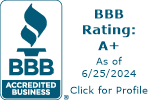Rick and the Girl in the Library
My brother Rick is hilarious. I know; I grew up with and worked with him as an adult. Being hilarious often means you’ll do things others wouldn’t dare. And being hilarious means you’re spontaneous. Yep, that’s Rick, too.
The Hilarious Incident
In his college days at the University of North Carolina, he and his buddies would meet in the library to study. They were all intelligent guys, so I suppose they studied and pushed one another to exceed. Rick had his eye on a beautiful blonde he’d been seeing on campus. He set his mind on getting a date with her. But how could he meet her? It seemed a daunting task.
One evening, while in the library with his buddies, this golden beauty walks in. His heart starts beating. Could this be his long-hoped-for opportunity? Without thinking, as the girl walked past him, he stuck out his index finger and poked her in the belly. I suppose you could say she was also spontaneous because when he poked her, she expelled an undesirable amount of loud, noisy gas. She was mortified! She ran away in horror!--totally humiliated as the table of college boys roared with laughter. Howls and howls of rip-roaring laughter.
The Moral of the Story
What are the odds of ever getting a date with that beauty? Slim to none, and Slim has left town!
I want you to buy fencing, yes. But!! I don’t want you to be hilarious or spontaneous. There’s no need for that. Terry has been helping Louis Page’s customers buy fencing for a long time--24 years come September! And she can be your best friend in helping you choose the right product. She’s also a whiz at locating those odd, hard-to-find sizes.
Call Terry at 978-486-3116 (Tap to Call) or check out our website: LouisPage.com.
And the next time you want to get a date, don’t act like a hilarious, spontaneous college guy named Rick; take your time and treat her like a lady. She’ll appreciate your manners.
All my best,
Debbie Page
CEO, Louis E. Page Inc – Woman-owned business and Family-owned since 1893. (It adds up to over 131 years owned and run by our family. Think about it: Nobody stays around in business that long without really supporting customers so they want to come back!)
P.S. Let’s make your fencing project a success with the right advice!










